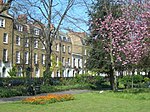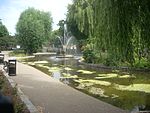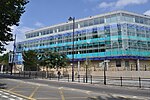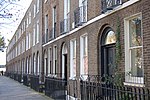Newcome's School
1815 disestablishments18th century in EnglandBuildings and structures demolished in 1820Buildings and structures in the London Borough of HackneyDefunct schools in the London Borough of Hackney ... and 2 more
Demolished buildings and structures in LondonUse British English from February 2023

Newcome's School was a fashionable boys' school in Hackney, then to the east of London, founded in the early 18th century. A number of prominent Whig families sent their sons there. The school closed in 1815, and the buildings were gutted in 1820. In 1825 the London Orphan Asylum opened on the site. Today the Clapton Girls' Academy is located here.
Excerpt from the Wikipedia article Newcome's School (License: CC BY-SA 3.0, Authors, Images).Newcome's School
Laura Place, London Clapton (London Borough of Hackney)
Geographical coordinates (GPS) Address Website Nearby Places Show on map
Geographical coordinates (GPS)
| Latitude | Longitude |
|---|---|
| N 51.553611111111 ° | E -0.051111111111111 ° |
Address
Clapton Girls' Academy
Laura Place
E5 0RB London, Clapton (London Borough of Hackney)
England, United Kingdom
Open on Google Maps








